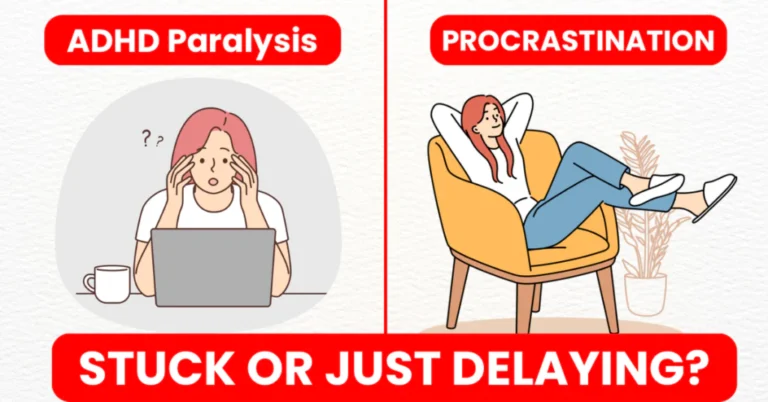10 Secret Signs of Estrogen Dominance Every Woman Out For
From controlling your menstrual cycle to promoting bone health and mood, estrogen is essential for women’s health. However, estrogen dominance, a condition in which levels of this hormone are excessive in comparison to progesterone, can upset the equilibrium of your entire body. Women of all ages may experience this prevalent but frequently disregarded hormonal imbalance, which could be the cause of a number of annoying symptoms, including anxiety, exhaustion, weight gain, and irregular periods. Early detection of the symptoms can help avoid more serious problems like fibroids, thyroid dysfunction, or even the risk of breast cancer.
What the Experts Say About Estrogen Dominance
According to board-certified OB-GYN and hormone specialist Dr. Nina Bradley, MD, ” estrogen dominance does not always mean you have high estrogen—it can also mean your progesterone is too low to balance it.” “Even though it’s a relative imbalance, it can have a big impact on your daily mood.” “Environmental toxins, chronic stress, poor liver detoxification, and hormonal contraceptives can all contribute to estrogen buildup in the body,” continues Dr. Rachel Levin, ND, a naturopathic physician specializing in women’s health. The majority of women, regrettably, aren’t even aware that their symptoms might be hormone-related.
Common Signs of Estrogen Dominance
Here are the top 10 symptoms of estrogen dominance that women should look out for:
- Irregular or Heavy Periods
- Severe PMS or PMDD (mood swings, irritability, breast tenderness)
- Weight Gain, Especially Around the Hips and Thighs
- Fatigue or Low Energy
- Anxiety, Depression, or Mood Swings
- Low Libido
- Bloating or Water Retention
- Hair Loss or Thinning Hair
- Sleep Disturbances or Insomnia
- Fibroids, Endometriosis, or Ovarian Cysts
If you’re noticing a combination of these symptoms, it may be worth discussing with a healthcare provider.
What the Latest Research Reveals
An increase in estrogen dominance symptoms in younger women may be caused by chronic low progesterone and excessive estrogen exposure from xenoestrogens, which are synthetic chemicals found in plastics, personal care products, and pesticides, according to a 2022 study published in Endocrine Reviews. According to a different 2023 study that was published in the Journal of Women’s Health, women who had estrogen dominance were twice as likely to report low libido and chronic fatigue, and they were three times more likely to have severe PMS. The NIH also emphasizes the link between hormone disruption in women of reproductive age and environmental estrogens.
Why Estrogen Dominance Is a Growing Public Health Concern
Thyroid dysfunction, autoimmune diseases, and breast cancer are just a few of the more severe health problems that estrogen dominance can subtly raise. However, many women who report hormone-related symptoms are misdiagnosed or completely disregarded. According to Dr. Bradley, “women are prescribed birth control pills or antidepressants far too frequently without a complete hormone workup.” However, that doesn’t deal with the underlying issue. Despite their profound effects on fertility, quality of life, and long-term disease risk, hormonal imbalances in women are underdiagnosed, according to the CDC.
How to Restore Hormone Balance Naturally
Fortunately, there are actionable steps you can take to reduce estrogen dominance and improve your overall hormone health.
1. Support Liver Detoxification
Excess estrogen is metabolized by the liver. Consume cruciferous vegetables, such as Brussels sprouts, kale, and broccoli. DIM (diindolylmethane), a substance present in these vegetables that promotes the breakdown of estrogen, might be added.
2. Reduce Xenoestrogen Exposure
Avoid plastics (especially BPA), choose clean personal care products, and opt for organic produce when possible.
3. Balance Blood Sugar Levels
Blood sugar fluctuations raise insulin levels, which may increase the production of estrogen. Reduce your intake of refined carbohydrates and increase your intake of protein and healthy fats at each meal.
4. Manage Stress
Prolonged stress raises cortisol levels, which can lower progesterone levels. Include relaxing pursuits like yoga, meditation, or taking nature walks.
5. Get Tested
Talk to your doctor about testing your estradiol, progesterone, and cortisol levels, especially if symptoms are persistent.
Listen to Your Hormones
Although it’s more common than most women think, estrogen dominance is also controllable. You can address the underlying cause of symptoms that might otherwise be written off as “normal” by paying attention to your body and getting help. Dr. Levin says, “We need to stop normalizing fatigue, mood swings, and painful times.” “Healthy hormones are necessary for overall body well-being.” Speak with a medical professional who specializes in integrative or functional women’s health if you’re worried about a hormonal imbalance. Relief and answers are what you deserve.
Check out the healthlynic ✔️approved range of products for Weight Loss, Improve metabolism and much more!







